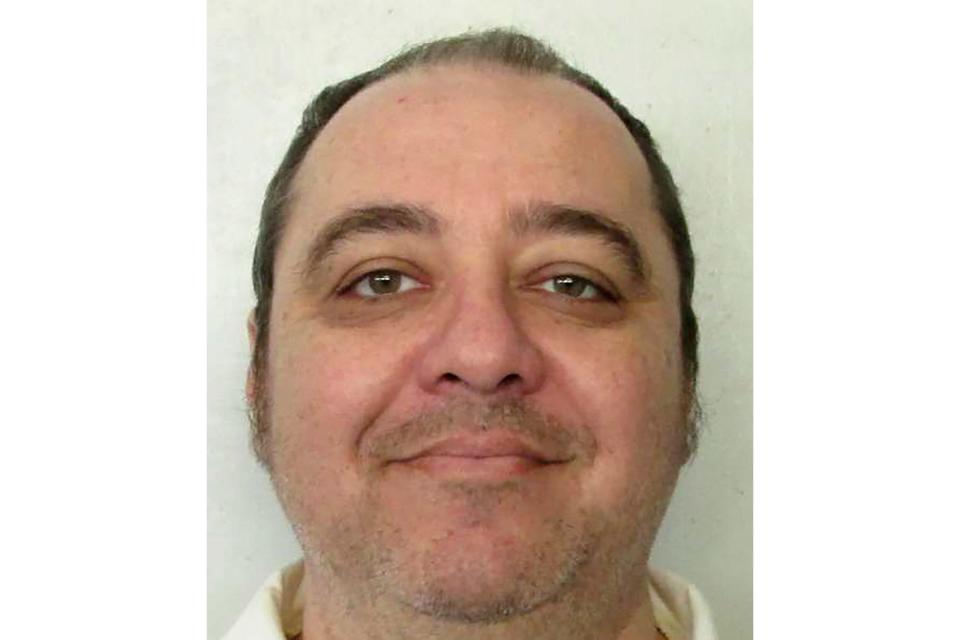Nitrogen hypoxia execution was sold as 'humane' but witnesses said Kenneth Smith was gasping for air
Convulsing and gasping for air, Kenneth Smith appeared to struggle for several minutes before his death Thursday in an Alabama execution chamber.
The details of what appeared to be a drawn-out painful death – the second time the convicted killer has faced an execution after a botched attempt in 2022 – raised questions about the first-ever use of nitrogen gas to fatally asphyxiate a condemned inmate.
Alabama is now the first state to use the new method to execute a human after becoming one of three states in 2015, along with Oklahoma and Mississippi, to add nitrogen hypoxia to its approved list of options.
But even before it was put into use, the experimental execution method garnered no shortage of controversy in the United States and across the world from opponents concerned that its implementation could cause undue pain – or even constitute torture.
Advocates, however, have long contended that nitrogen hypoxia would be a more humane alternative to the long-preferred method of lethal injection.
New Hampshire: Plane crashes into residential neighborhood, pilot taken to hospital
What is nitrogen hypoxia and how was it used to execute Smith?
Nitrogen exists organically in the atmosphere, composing around 80% of the air that humans and animals breathe.
Colorless and odorless, the gas is only safe to inhale until it is separated from oxygen. The lethal concoction that was administered to Smith was designed to deprive him of oxygen until he breathed only a high concentration of nitrogen, causing him to asphyxiate and die.
How did proponents of nitrogen hypoxia think the execution would go?
Alabama officials argued that it would be a "swift, painless, and humane" execution, but what Smith experienced prior to his death appeared to be a stark contrast from that.
Lawyers for the state have also noted that Smith and his lawyers themselves identified the method as preferable to lethal injection after Alabama failed to execute him in 2022 using the problematic method.
Opponents to nitrogen gas, however, have argued that its use as an execution method would be inhumane, causing a drawn-out, humiliating death in which an inmate would suffer.
"This will not be a death that will be discreet," Joel Zivot, an associate professor in anesthesiology at Emory University's School of Medicine, told USA TODAY prior to the execution. "It may be prolonged. I think that there will be a good chance there will be some suffering."
Zivot, who submitted a complaint to the United Nations Human Rights Council, expressed concerns that the nitrogen gas could induce a seizure in Smith, cause him to vomit and could even pose a hazard to others in the room if it leaks out from a poorly-secured mask.
"The law requires that this execution not be cruel," Zivot said. "From what has been described to me, what I know about nitrogen gas and how it may work, this to me feels well within the definition of cruelty."
U.N. experts responded to his complaint in January sharing his alarm and warning that the untested execution method may cause “grave suffering” and likely violates the prohibition on torture.
Despite the pushback, Alabama Attorney General Steve Marshall has called nitrogen gas “perhaps the most humane method of execution ever devised.”
How did Smith's execution unfold?

Smith, 58, was the first person in the U.S. to be put to death by nitrogen hypoxia after a drawn-out legal battle.
Strapped to a gurney, Smith was affixed with a face-mask in the death chamber at the William C. Holman Correctional Facility in Atmore. Before he was pronounced dead 22 minutes later at 8:25 p.m., Smith appeared to convulse, gasp for air and shake vigorously for about four minutes after the nitrogen gas began flowing through the mask.
Killing a prisoner with nitrogen is the latest attempt to humanely administer capital punishment after lethal injection has been the primary method in the 27 states with the death penalty still in place since the 1970s. State lawyers had previously claimed in court filings that an execution by nitrogen would ensure “unconsciousness in seconds.”
How did Smith's previous execution attempt fail?

The state had already failed in its first attempt in 2022 to execute Smith, one of two people to receive the death penalty for the 1988 murder-for-hire plot of a preacher’s wife.
In November 2022, Smith suffered for hours while he was strapped to a gurney to be executed by lethal injection. But prison officials could not gain access to his veins before the death warrant expired and the execution process was halted.
After the failed attempt, Smith chose nitrogen gas for his execution. Meanwhile, Smith’s lawyers told the Supreme Court it would be cruel and unusual punishment to try to execute Smith again, because the first, “cruelly willful,” attempt by lethal injection failed.
“Alabama has a really terrible track record of being able to carry out executions without mistakes occurring and without the consequential pain and suffering of the prisoner who's being executed,” Robin Maher, the executive director of the Death Penalty Information Center, told USA TODAY.
Contributing: USA TODAY reporters Jeanine Santucci, Thao Nguyen, Cybele Mayes-Osterman and Maureen Groppe; Marty Roney, Montgomery Advertiser
Eric Lagatta covers breaking and trending news for USA TODAY. Reach him at elagatta@gannett.com
This article originally appeared on USA TODAY: Nitrogen hypoxia used to execute Alabama's Kenneth Smith: What to know

